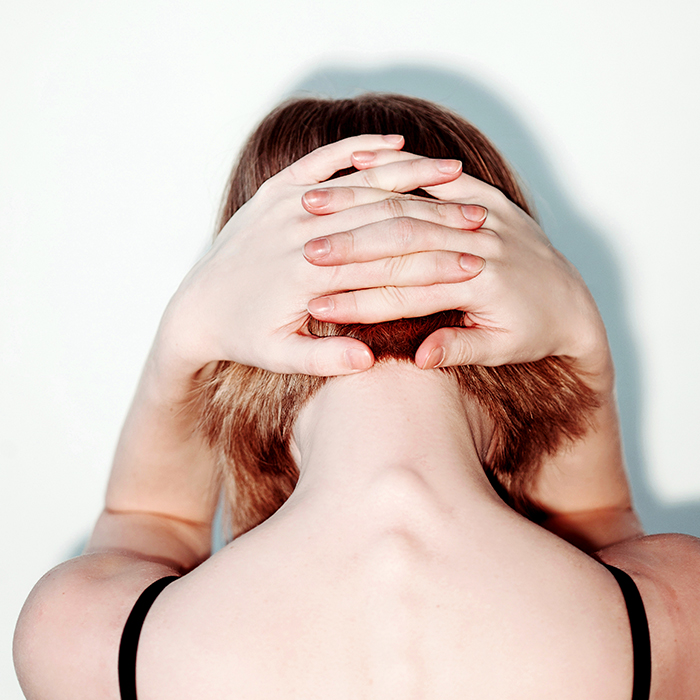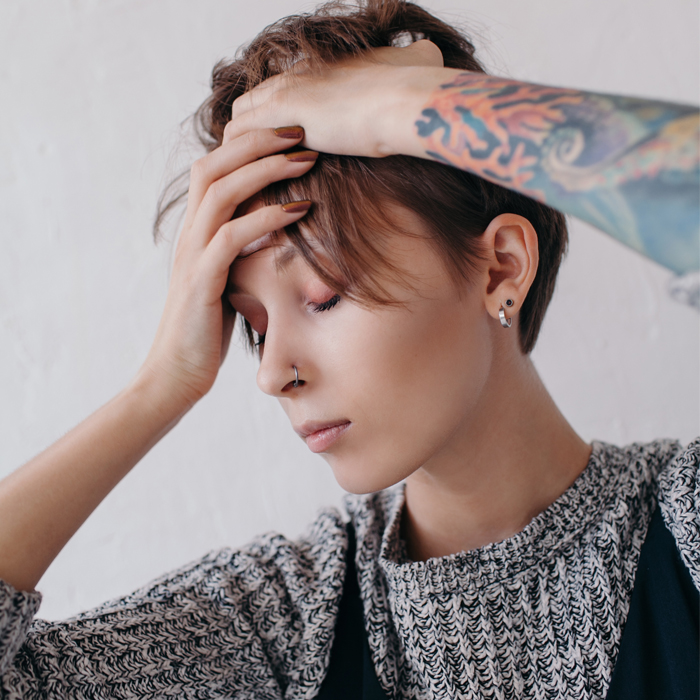Can Botox Actually Cure Your Migraines? We Asked a Neurologist

For those of you who have never experienced a migraine, I envy you. When a migraine hits, the pain experienced is not exaggerated—the throbbing from an intense headache on top of nausea and sensitivity to any sort of noise make you feel pretty helpless.
Botox for migraines has been something that has flown under the radar, as many people know Botox as a procedure simply aimed at hiding fine lines. We turned to Matthew S. Robbins, MD, director of inpatient services at Montefiore Headache Center and the chief of neurology at the Jack D. Weiler Hospital, Montefiore, to break down the procedure for us. Scroll down to see what he has to say.

What are migraines
First, we should define what a migraine is and how it is different from a headache. It is a common misconception that a migraine is a more intense headache and that is simply not the case.
"A migraines is an inherited neurological condition that features headaches as the most common symptom," says Robbins. "Headaches are not the only symptoms people can have. They can have sensitivity to the environment around them like light and sound. They can have nausea, which can lead to vomiting. They can have blurred vision. In a minority, but sizable number of people, it can progress to what we call chronic migraines."
Migraines aren't something that is simply caused by not eating or drinking. "It is genetic. People who have migraines are genetically programmed to have a more sensitive brain," he says. "There are so many internal and external factors that can influence how bad migraines can be: stress, change in sleep patterns, diet, hormones, etc."
A more extreme migraine is called a chronic migraine, which is what Botox is meant to really treat. "The way a chronic migraine is diagnosed is that if you're having headaches on half of all days for at least three months," he says.
Who Should Get It
It only works for people who have chronic migraines. Botox is the only FDA-approved treatment specifically for these types of migraines at this point in time.
"We like to think of Botox for migraines as a preventative therapy—a treatment that's given to reduce how frequent your migraine attacks are," he says. "You don't feel better immediately. Over the next three months, it should decrease the number of migraines you're having."
So while it isn't a cure-all treatment to migraines altogether, it alleviates the pain from having so many of them in a short period of time. There are other devices and medication that can help treat chronic migraines if you don't want to go down this route. There are also behavioral treatments you can look into.

How It Works
"Botox is a toxin that is extracted from a certain bacteria. It's been used for a couple of hundred years in medicine. It was first used in neurological conditions rather than cosmetic ones. It was first approved to treat spasms of the face and eye muscles. Only later was it discovered coincidentally that it could world for cosmetic purposes, like wrinkles," he says.
When treating migraines with Botox, it is injected in muscles in the forehead, in the temples, and in the back of the head, neck, and shoulders. It's a lot of injections (between 30 to 40 in one session), but each injection holds a small amount of Botox.
"How we believe it works is that it stops the release of certain chemicals from nerve cells that can cause the inflammation that is typically involved in migraines," he says.
"It's generally quite a safe treatment. It's done in an office and doesn't require any special preparation. People can drive to the office for it and drive home after. It is extremely rare for people to have an allergic reaction to it. There are some commonsense precautions—like you shouldn't go for a neck or shoulder massage immediately after."
Side Effects
Luckily, many insurances generally cover Botox for migraines as a treatment. He does say that some require patients to try trial oral medicine before giving Botox as an option.
According to the Botox Onabotulinumtoxin A site, side effects include problems swallowing, speaking, or breathing. Because it is a toxin, it can also cause loss of strength and all-over muscle weakness, double vision, blurred vision, and drooping eyelids.
"In terms of cosmetics, the Botox can weaken the muscle that lifts up the eyebrows. Instead of the eyebrows looking horizontal, they can start to form a V-shape. This is one you can work around by changing the location of the injection of the forehead," says Robbins.
It's not known what Botox for migraines can do for pregnant women or women who are breastfeeding. We always encourage asking your doctor first before booking an appointment to see what the best treatment is for you.
This article is provided for informational purposes only and is not intended to be used in the place of advice of your physician or other medical professionals. You should always consult with your doctor or healthcare provider first with any health-related questions.

Kate Moss. She's the OG beauty chameleon.
Who are your 5 favorite people to follow on Instagram?@zoeisabellakravitz @bellahadid @emrata @beautifuldestinations @bookofthemonth
What's the beauty essential you can’t live without?Eyeliner. People sadly look at me strangely (or share concern over my well being) when I don't wear it. My go-to is the Marc Jacobs Beauty Highliner Gel Eye Crayon Eyeliner in black.
What's your desert island album?The Weeknd's Starboy.
What's your favorite Byrdie.com story?Game of Thrones Star Nathalie Emmanuel on Fame, Fear, and Her Iconic Hair. It's such a great profile on her and it almost made me want to start watching Game of Thrones.